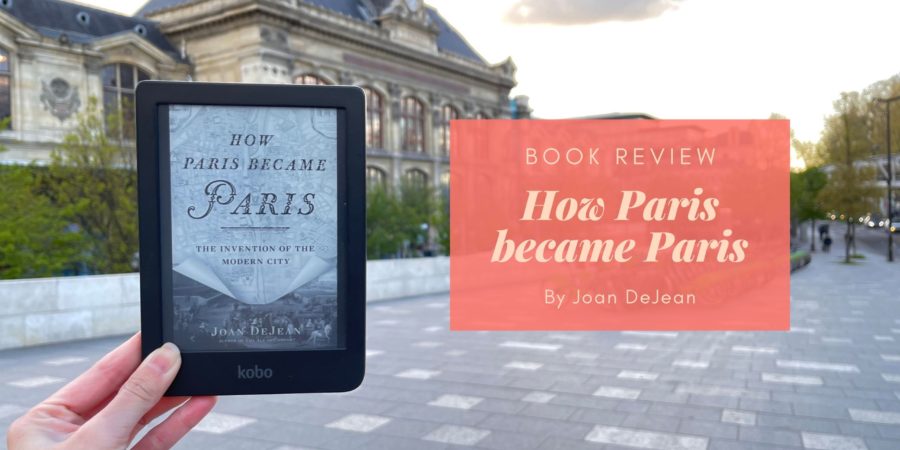Since I was going with my family for a short weekend trip to Paris, I thought it was time to dig this book out of the TBR and give it a read!
As the title says, How Paris Became Paris looks at the way the modern city (and reputation) of Paris was shaped in the 19th century. This was really because of several developments such as:
- Pont Neuf
- Place des Vosges
- île Saint-Louis
- The boulevards, Parks, Streets
- City services (including public transport! which quite quickly became ‘elite transport’! but they made an attempt)
and much more!
Each chapter is topical, picking one aspect (such as a landmark or even an idea, like how Paris became the centre of fashion) and exploring how it has developed. The good part of this method is that it’s very easy to see how certain parts of the city developed and what that meant for urban life. However, the focus on one topic also means that it can be harder to get a general overview of how all the various things interacted with each other.
One thing that caught my attention was this line in Chapter 9: City of Romance – “Foreign visitors to seventeenth-century Paris were constantly amazed at the freedom women enjoyed there, at what a visible presence they were in every new public venue then created – behaviou that was clearly unfamiliar in other European capitals“. In the next paragraph, we can find this line:
“The many descriptions of the women one encountered in the new Paris make it clear that seventeenth-century observers believed that a new kind of woman had come onto the scene in the new type of city […] Again and again, the beautiful women of modern Paris were the ruin of all those who were seduced by their charms.”
It reminded me of what I read in Stephanie Lynn Budin’s book ‘Freewomen, Patriarchal Authority, and the Accusation of Prostitution‘ which basically talked about how women with freedom and independence from men were invariably seen as prostitutes. To me, what happened in Paris seems to be milder version of this phenomenon, where the relative freedom that Parisian women had led to them being seen as “dangerous.” And of course, this conception of Parisian women led to the conception of the term “coquette”.
The term coquette has an interesting history too: before the 17th century, the coquette were ridiculous figures because they were prudes or old women; in the early 17th century, they became ridiculous because they always chased after fads. By the 1680s, the coquette was someone who defined what was in style (or la mode) and thus made others ridiculous.
Overall, I found this to be a fascinating and easy-to-read book! I’ve always thought that modern Paris was the work of Haussman, but this book has convinced me that earlier developments are more important to the modern idea of Paris.

This sounds interesting! While I can see how the formatting might not make it a good way to get an overall picture, it does seem like it might be a nice book to read in bite-sized portions!
Yes, it’s a book that you can dip in and out of if you want!
The etymology of coquette is fascinating! And this sounds like such an interesting view into the development of a beautiful city!
It was! Paris is still not my favourite city but I have a new appreciation for it